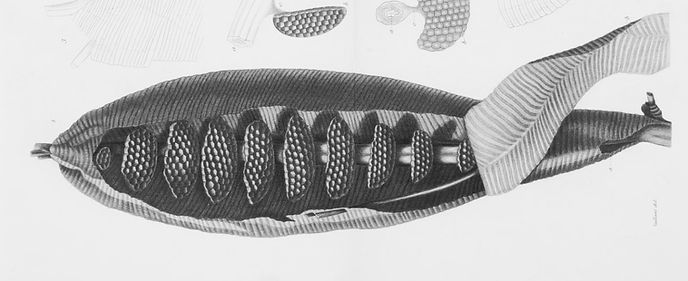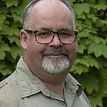
Archive
The IUSSI is currently reviewing archival material from its history of social insect research. Reports on this project by our archivists, Christopher Starr and David Nash, are below.
Current Status of the IUSSI Archive

Prof. David Nash
IUSSI Archivist
UNIVERSITY OF COPENHAGEN


The cataloguing of the paper materials from the IUSSI archive that were transferred to Copenhagen in 2022 is now nearing completion, tahnks in large part to scanning of materials by Koos Boomsma himself. The next phase will be to collate all the digital materials and identify any gaps. We are currently going through back-issues of Insectes Sociaux to identify any society-relevant information that has not been previously digitized.
Status, May 2024
In 1990, the North American Section of the IUSSI added to its set of officers an Archivist with the mandate to ensure the preservation of documents and other materials relevant to the development of our discipline. The first archivist was William L. Nutting (1922-1992), after which it passed to the present archivist, Christopher K. Starr.
From the outset the Archive has maintained a high-minded disregard for sectional and geographic boundaries. Accordingly, it was a natural process when it was changed into an IUSSI-wide facility by decision of the 2002 congress in Sapporo.
The Archive comprises both documents and images relevant to the development of our discipline from earliest times to the present. The documents are mostly on paper, although in recent years new acquisitions have been increasingly in electronic form. The paper documents include a substantial mass of correspondence between colleagues.
In addition, I have been very much interested in autobiographical accounts of leading colleagues, whether these are written with professional colleagues or family in mind. Recall that Charles Darwin originally wrote his autobiography at the request of this children, and it was only afterward realized that it would be of interest to a much wider readership. Similarly, Elizabeth A. McMahan (1924-2009) wrote and illustrated for the delectation of her nieces a wonderful full-length autobiography, a copy of which the Archive is very pleased to have.
The Archive has given some attention to the preservation of scientific correspondence and other personal papers of leading colleagues. I have not especially wanted to acquire this material for our files in particular and, in fact, would prefer that it go to larger repositories more centrally situated for the use of scholars. However, it has been a matter of concern to ensure that materials of possible value to scholars not be lost simply because it is no one’s particular business to ensure their preservation. For example, after the passing of Leo Pardi (1915-1990) I learned that his personal papers appeared to be scattered here and there. The Italian Section of the IUSSI has now turned its attention to trying to collect and deposit them in a permanent repository.
Valuable as they are, in the digital age the permanent deposition of personal papers is rendered increasingly irrelevant by the fact that such materials (especially correspondence) tend simply not to be generated. That is, scientists no longer print and file copies of letters to/from colleagues. So, how are immediate accounts of discussions and research to be preserved? The core approach, I believe, lies in identifying episodes, projects and institutions in the present period and near past that seem likely to merit narrative accounts and encouraging those who were involved to record them. In recent years I have had some success in doing just this. I contact a particular colleague somewhat like this: “You were intimately involved in … and over the years you have undoubtedly told the story many times in conversation of how it unfolded. I would like you now to tell the same story with your fingers on the keyboard for the permanent record. You type about half as fast as you talk, so how hard can that be?”
In the coming period I expect to make such an approach to a number of colleagues that I know have a tight, relevant and engaging story to tell to enrich the Archive.
The photo archive is built from two main sources. Many living and recent colleagues are well represented in the Internet, where a search for images yields good material. Where this is not the case, I have in many cases written to colleagues to complain that the Archive does not have images of them of the quality that we would like. I am especially interested in photos showing the individuals at work in the field or lab, as well as photos from particular periods of high relevance to their research careers. In addition, there is a much smaller number of photos that I took at meetings. Each of these endeavours continues, and as the Archive gains better images it will be suitable to cull some earlier ones.
It has been suggested that the entire photo archive should be made available on the Internet. I do not favour this, as many images are redundant or of indifferent quality. However, a substantial searchable selection should certainly be made available in this way. After going through a further phase of addition and editing, it is proposed to prepare an extensive annotated selection together with IUSSI webmaster David Nash.
The Archive’s physical aspect has recently undergone a major change. It was for a long time a matter of concern that the location of the physical materials in a filing cabinet here in Trinidad greatly restricts their accessibility and is dependent on the continued good health of one individual. Accordingly, it was decided last year to move the Archive to the University of Copenhagen, where it will enjoy a much improved permanence and accessibility.
This report is written before the IUSSI’s international congress in San Diego, where the position of Archivist will be on the agenda. I am willing to stand for re-election, but in time it will be appropriate to pass this office to someone younger than me (b. 1949) and preferably with a more central institutional base. This is just one part of the overall modernizing of the Archive to serve scholarship in the history of our discipline.
Christopher K. Starr
Caura Village, Trinidad & Tobago;
Archivist's Report, 2022

Prof. Christopher Starr
Past IUSSI Archivist
UNIVERSITY OF THE WEST INDIES
Koos Boomsma, unpacking the international archive in Copenhagen on its arrival from Trinidad.